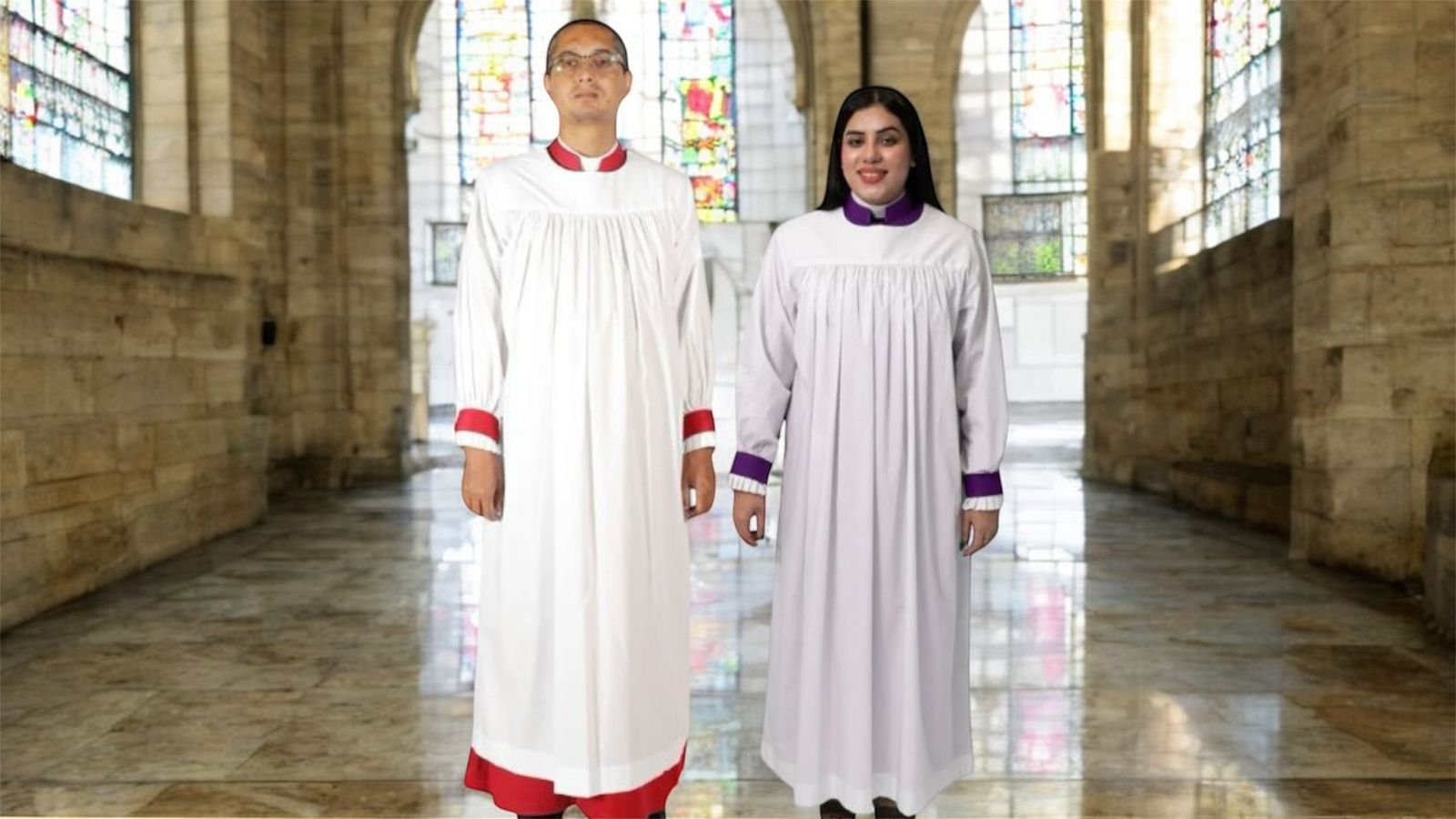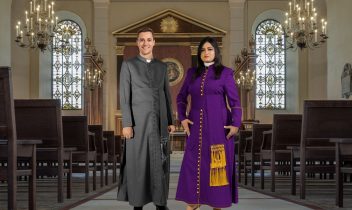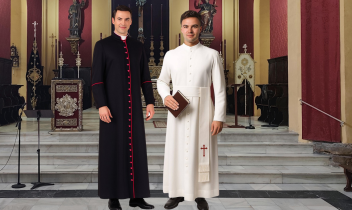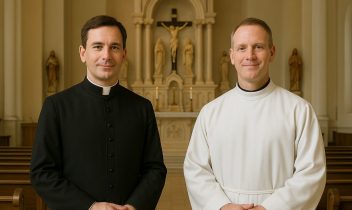No products in the cart.
Return To Shop
Tradition in the Clerical World
The rochet is a distinctive white vestment that has long been associated with clerical attire, often seen in the most solemn church ceremonies. In the grandeur of a cathedral, as the soft echo of prayers fills the air, the bishop steps forward in his ceremonial attire, commanding reverence and respect. Among the many garments he wears, one of the most significant is the rochet a symbol of purity, holiness, and the sacred role of the clergy. But what exactly is a rochet, and how does it fit into the larger picture of liturgical clothing? This article explores the Rochet Meaning, its historical significance, and its relationship with other ecclesiastical garments, including the chimere. Along with looking at how it is worn in conjunction with other significant pieces of clothing like the purple cassock, zucchetto, and more, we will also look at the definition of the rochet, its role in religious traditions, and its contemporary applications.
What is a Rochet?
The rochet is a white, flowing garment worn by bishops and some clergy members during formal liturgical functions. It is typically worn over the cassock and symbolizes the purity and dignity of the wearer’s office. Historically, the rochet has been an essential piece of clerical attire, reflecting a commitment to holiness and service within the Church.
Defining the Rochet: What Makes It Unique?
The rochet meaning lies in its role as a white, knee-length liturgical garment worn by clergy, symbolizing purity and spiritual commitment. Typically paired with a cassock, it features lace accents and is used in formal church ceremonies. In simplest terms, the rochet is a long, white vestment that reaches down to the knees, made of light fabric such as linen or cotton. It is often worn by bishops during significant religious events, such as Mass and other solemn services. Its color pure white represents the spiritual purity and sanctity of the office, while its flowing design mirrors the dignity and solemnity of the role it symbolizes. Unlike other garments, such as the chasuble, which are worn during the actual celebration of Mass, the rochet serves as a sign of the bishop’s authority and calling to a life of service and spiritual purity.
The Rochet and the Chimere
When discussing the rochet, it is important to understand its relationship with the chimere. While the rochet is primarily white, the chimere is typically worn over it. The chimere can be red, purple, or black and is a more elaborate, formal garment worn by bishops for high-liturgical occasions. The chimere serves as an additional layer of ceremonial attire, signifying the authority of the bishop or other clergy member. Together, the rochet and chimere form a striking combination, representing both spiritual purity and ecclesiastical authority. This pairing is often seen during important religious celebrations or the bishop’s presence in the cathedral.
A Complete Clerical Ensemble
A typical outfit for a bishop includes the purple cassock, which is worn beneath the rochet. The purple cassock signifies the authority of the bishop’s office within the Church, while the rochet above it symbolizes purity and holiness. On top of these, the bishop often wears a zucchetto, a small skullcap that further distinguishes his role within the ecclesiastical hierarchy. This ensemble a purple cassock, white rochet, and zucchetto is a visual representation of the bishop’s spiritual office. Each piece of clothing plays a vital role in marking the significance of the bishop’s presence and duties during liturgical services.
History and Significance of the Rochet
The history of the rochet dates back to the Middle Ages when it began to be used as a part of the ecclesiastical vestments for bishops. Its design evolved over the centuries, reflecting the changing tastes and religious practices of the times. However, the core symbolism of the rochet as a garment of purity and clerical dignity has remained unchanged. Worn by bishops as a symbol of their commitment to lead their flock with holiness, the rochet meaning carries deep spiritual meaning. It’s not just a piece of clothing; it’s a visual representation of the sacred trust placed upon those who wear it.
How to Wear the Rochet with Other Liturgical Garments
When worn in combination with other liturgical vestments, the rochet enhances the overall dignity of the wearer. The rochet is often worn beneath the chasuble, which is a larger, more ornate garment worn during Mass. While the chasuble is the main liturgical vestment for the celebration of the Eucharist, the rochet serves as an important undergarment, representing the purity of the priest’s spiritual life. In some cases, a bishop may wear the rochet with a crosier a staff that signifies his pastoral authority further emphasizing his sacred duties and responsibilities.
Why the Rochet Matters in Modern Times
In the modern era, the rochet continues to be an essential part of a bishop’s wardrobe, despite the changing nature of liturgical attire. While some liturgical garments have become less common or have evolved in style, the rochet remains a staple because of its rich spiritual and historical significance. The rochet is more than just a vestment, it’s a symbol of the Church’s timeless commitment to holiness, purity, and authority. For bishops, it serves as a constant reminder of their role in leading their flock with reverence and devotion.
How to Choose the Right Rochet
Choosing a rochet involves selecting a garment that reflects both the personal style and the liturgical traditions of the wearer. Quality materials such as linen or fine cotton are typically used to ensure comfort and durability during long services. The design of the rochet should be flowing but not too loose, as it needs to maintain a dignified, ceremonial appearance. If you are purchasing a rochet for personal use, you can find a variety of styles and sizes online from reputable stores that specialize in clergy attire. Some retailers even offer custom-made rochets to suit the wearer’s specific needs.
Conclusion
Understanding the rochet meaning is an integral part of the clergy’s vestments, holding deep historical and symbolic meaning. From its simple yet elegant design to its profound connection with the spiritual purity of the clergy, the rochet continues to play an important role in ecclesiastical fashion today. Whether worn alone or with other ceremonial garments like the chimere, purple cassock, and zucchetto, the rochet is a powerful symbol of the sacred duties and responsibilities of those who serve the Church. If you’re considering acquiring a rochet for yourself or a loved one, or if you’re simply curious to learn more about the various garments that make up the sacred vestments of the clergy, explore our selection at Holy Clergy. Our collection offers high-quality, traditionally crafted rochets and other ecclesiastical garments for all your needs.
Frequently Asked Questions (FAQs)
What is the rochet meaning?
The rochet is a white, knee-length vestment worn by bishops and some clergy members, signifying purity and holiness.
What is the difference between the rochet and the chimere?
The rochet is a white garment worn by clergy, while the chimere is an additional, more formal layer worn over the rochet, often in red, purple, or black.
What role does the rochet play in the liturgy?
The rochet is worn by bishops during Mass and other liturgical services, symbolizing purity and dignity while reflecting the bishop’s role within the Church.
How is the rochet worn with other garments?
The rochet is often worn with a purple cassock beneath and a zucchetto on top, with the ensemble representing the bishop’s office and spiritual authority.
Can I purchase a rochet online?
Yes, many stores specialise in clergy attire and offer a range of rochets, from ready-made options to custom designs.
Ready to find your perfect rochet and other clergy attire? Visit Holy Clergy, where we offer a wide range of high-quality, customized liturgical garments to suit your needs.








Recent Comments